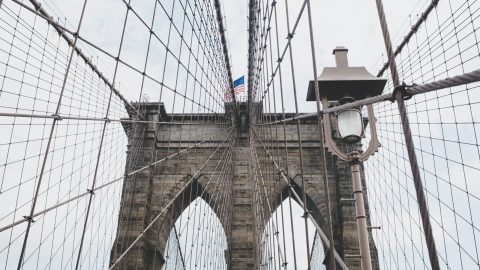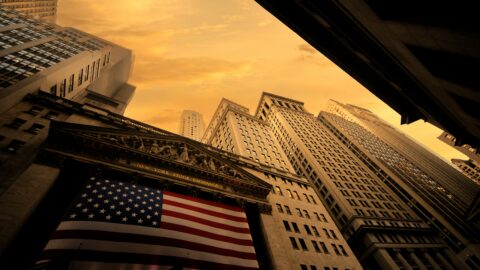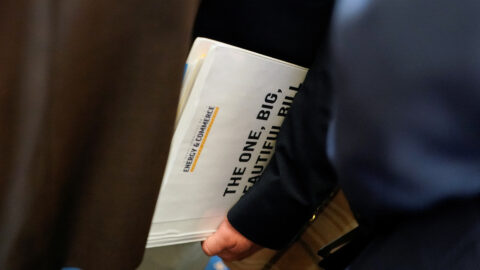The economic paradigm – the leitmotif, as it were – has only changed twice in the past 200 years: in the 1930s from liberalism to Keynesianism, and in the 1970s to monetarism. Since the Great Financial Crisis in 2008, we have noticed a new economic upheaval, which has now crystallised into a new paradigm as a consequence of the measures taken to fight the corona pandemic: without a name yet, this paradigm is characterised by cheap money and a very active role of the State, i.e. the government.
Liberalism
Until the stock market crash of 1929, the liberalism coined by Adam Smith and John Stuart Mill had dominated the reasoning in politics and the corporate sector: the government has to provide legal security and peace, but otherwise keeps out of business. Taxes and government spending are very low (often below 3% of economic output), and whatever private individuals and companies generate, they get to keep. This period was dominated by entrepreneurship, a spirit of optimism and departure, but also enormous inequality (see for example Manchester Capitalism, which led Karl Marx to the conclusion that the poor masses would ultimately have to rise).
Keynesianism
The stock market crash of 1929 and the following years of the Great Depression resulted in the increasingly popular opinion that the State had to assume a more active role in order to jump-start a stagnating economy and to support the unemployed masses in making a living. This philosophy – propagated by John Maynard Keynes – would gradually prevail, reaching its peak after WWII. Now taxes were high, but the State intervened with supportive measures in the economy (while taking on increasingly excessive amounts of debt).
Monetarism
During years of high unemployment, inflation, and a stagnating economy (stagflation) in the 1970s, the Chicago Boys around Milton Friedman got their big opportunity to implement their model, i.e. monetarism, under Margaret Thatcher and Ronald Reagan in the UK and the USA from the 1980s onwards. At the core of this philosophy, the role of the State had to be curtailed and taxes had to be cut in order to allow the market forces – freed by liberalism and privatisation – to create growth, which would ultimately be beneficial to all.
The new paradigm: cheap money and a very active State
After years of solid growth from 1982 to 2008, we experienced the biggest crash since 1929 in 2009, after excessive speculation in tandem with excessive debt and lax supervision had created uncontrollable financial risks. Governments and central banks came to the economy’s rescue – by cutting interest rates, recapitalising banks, and passing enormous stimulus packages. In the end, the governments took over enormous volumes of debt from banks and companies, with government debt rising massively as a result. Whenever said debt seemed to become financially unviable, the central banks would increasingly come to the rescue and buy government bonds with freshly printed money. This system – formerly condemned as certain path to hyperinflation – has worked surprisingly well for the past ten years: inflation has not increased in any one of the large economic areas while governments can issue almost any volume of bonds i.e. raise debt at zero interest. This era of cheap (or indeed, free) money has been with us for ten years; but now corona has entered the picture.
Corona and the new paradigm
When global governments started to lockdown their economies from March 2020 onwards, many also felt obliged to protect and support jobs (i.e. voters) and companies financially. In almost every country, previously unthinkable amounts of money have been funnelled into financing short-time work regimes and lost profits and costs for companies. Again, the State took on a heavy load of debt (this time, though, often of its own volition), and governments would intervene in the economy to previously unseen degrees. Since they occasionally also take over shares in companies (e.g. airlines) and grant generous loans they become co-owners, which results in the usual array of risks of a distorted market.
Opportunities and risks
This new era of cheap money and a very active State harbours opportunities, but mainly risks. Among the opportunities is the fact that active governments that can finance their projects at low costs may seize this chance to implement necessary large-scale investments towards a sustainable economic model. In order to achieve the necessary transition to purely renewable energies and electromobility as quickly as possible, governments can build infrastructure, offer grants, and thus pave the way for a future with an improved climate. Time will tell whether that will actually happen; however, the signs so far are not overly encouraging, given that the focus is more on maintaining existing structures and zombie companies instead of investing in industries of the future.
The risks of this new paradigm outweigh the opportunities, because history shows that the State has a sub-par track record as entrepreneur. It has also been bad at selecting winners or facilitating the required change. And it is this very decision that it will soon be faced with when it has to decide which companies can extend their loans and receive further help.
If inflation rises, the central banks have to increase interest rates at some point, at which point the entire governmental and economic framework – burdened with excessive debt as it is – will crack. This is another risk.
Conclusion
For a short economic stimulus, the measures selected would probably be right. But if they remain in place for too long, distorted markets, low growth, and politics driven by lobbyism may be the result.
Legal note:
Prognoses are no reliable indicator for future performance.
Legal disclaimer
This document is an advertisement. Unless indicated otherwise, source: Erste Asset Management GmbH. The language of communication of the sales offices is German and the languages of communication of the Management Company also include English.
The prospectus for UCITS funds (including any amendments) is prepared and published in accordance with the provisions of the InvFG 2011 as amended. Information for Investors pursuant to § 21 AIFMG is prepared for the alternative investment funds (AIF) administered by Erste Asset Management GmbH pursuant to the provisions of the AIFMG in conjunction with the InvFG 2011.
The currently valid versions of the prospectus, the Information for Investors pursuant to § 21 AIFMG, and the key information document can be found on the website www.erste-am.com under “Mandatory publications” and can be obtained free of charge by interested investors at the offices of the Management Company and at the offices of the depositary bank. The exact date of the most recent publication of the prospectus, the languages in which the fund prospectus or the Information for Investors pursuant to Art 21 AIFMG and the key information document are available, and any other locations where the documents can be obtained are indicated on the website www.erste-am.com. A summary of the investor rights is available in German and English on the website www.erste-am.com/investor-rights and can also be obtained from the Management Company.
The Management Company can decide to suspend the provisions it has taken for the sale of unit certificates in other countries in accordance with the regulatory requirements.
Note: You are about to purchase a product that may be difficult to understand. We recommend that you read the indicated fund documents before making an investment decision. In addition to the locations listed above, you can obtain these documents free of charge at the offices of the referring Sparkassen bank and the offices of Erste Bank der oesterreichischen Sparkassen AG. You can also access these documents electronically at www.erste-am.com.
Our analyses and conclusions are general in nature and do not take into account the individual characteristics of our investors in terms of earnings, taxation, experience and knowledge, investment objective, financial position, capacity for loss, and risk tolerance. Past performance is not a reliable indicator of the future performance of a fund.
Please note: Investments in securities entail risks in addition to the opportunities presented here. The value of units and their earnings can rise and fall. Changes in exchange rates can also have a positive or negative effect on the value of an investment. For this reason, you may receive less than your originally invested amount when you redeem your units. Persons who are interested in purchasing units in investment funds are advised to read the current fund prospectus(es) and the Information for Investors pursuant to § 21 AIFMG, especially the risk notices they contain, before making an investment decision. If the fund currency is different than the investor’s home currency, changes in the relevant exchange rate can positively or negatively influence the value of the investment and the amount of the costs associated with the fund in the home currency.
We are not permitted to directly or indirectly offer, sell, transfer, or deliver this financial product to natural or legal persons whose place of residence or domicile is located in a country where this is legally prohibited. In this case, we may not provide any product information, either.
Please consult the corresponding information in the fund prospectus and the Information for Investors pursuant to § 21 AIFMG for restrictions on the sale of the fund to American or Russian citizens.
It is expressly noted that this communication does not provide any investment recommendations, but only expresses our current market assessment. Thus, this communication is not a substitute for investment advice.
This document does not represent a sales activity of the Management Company and therefore may not be construed as an offer for the purchase or sale of financial or investment instruments.
Erste Asset Management GmbH is affiliated with the Erste Bank and austrian Sparkassen banks.
Please also read the “Information about us and our securities services” published by your bank.



